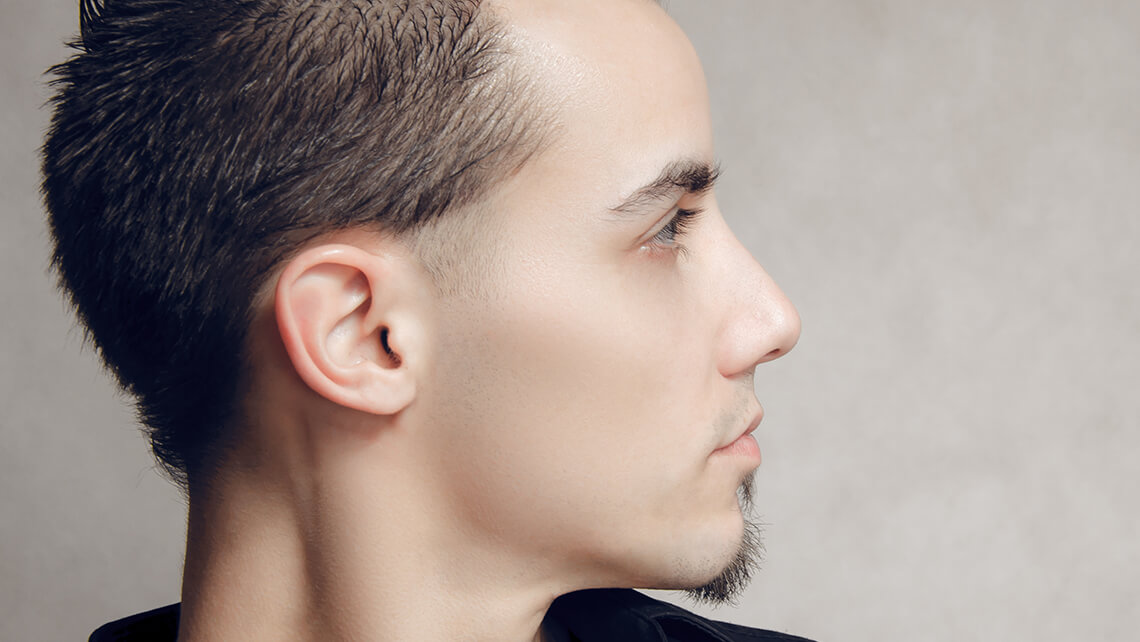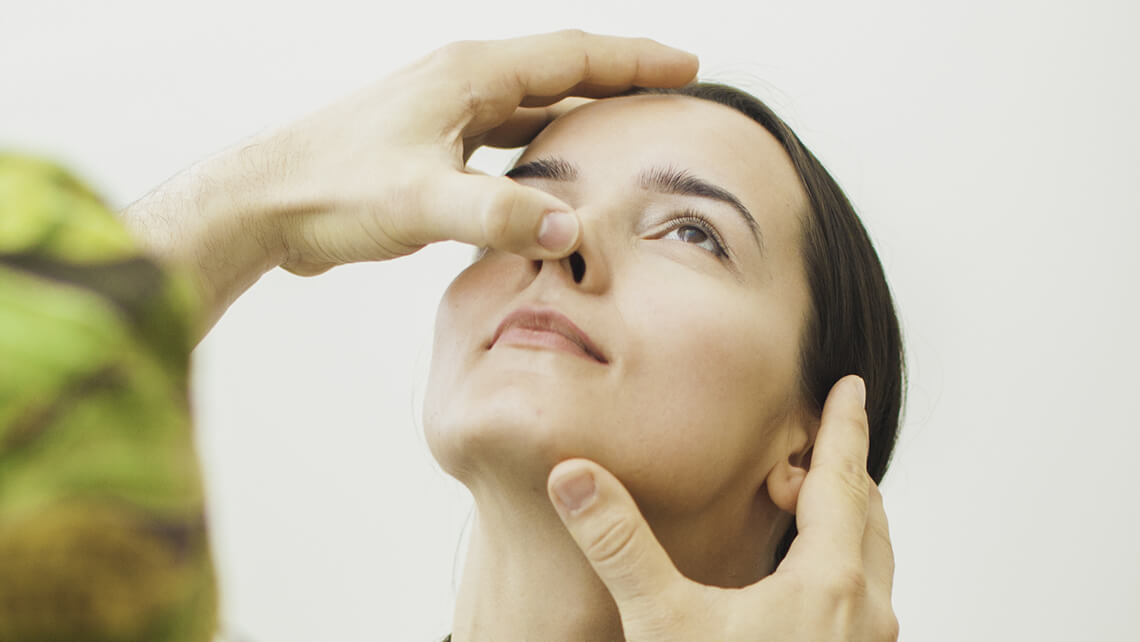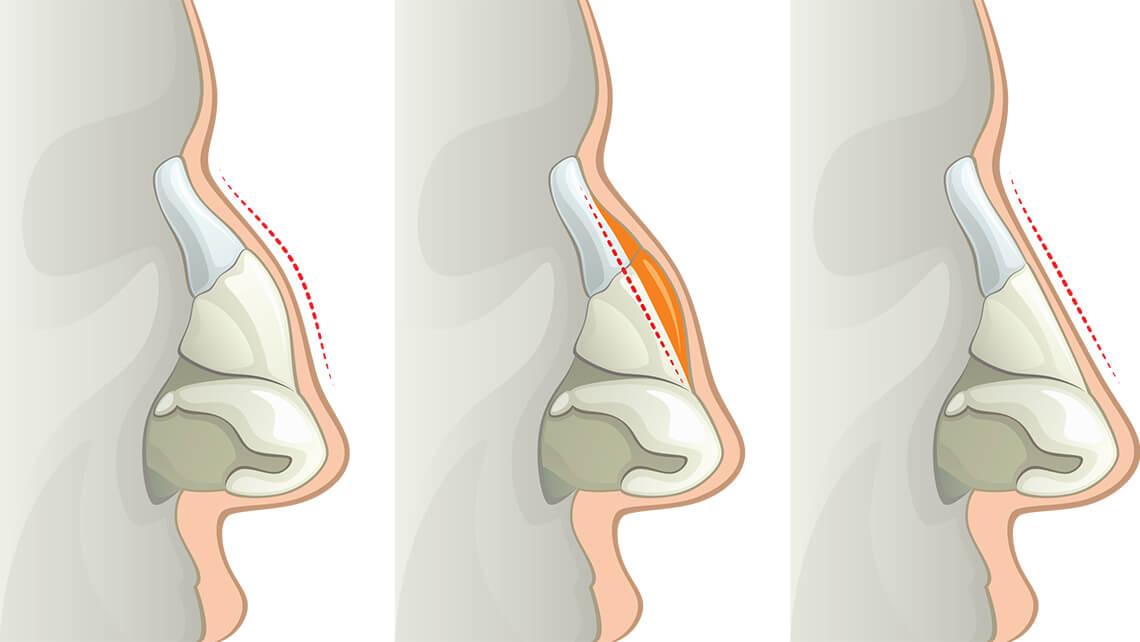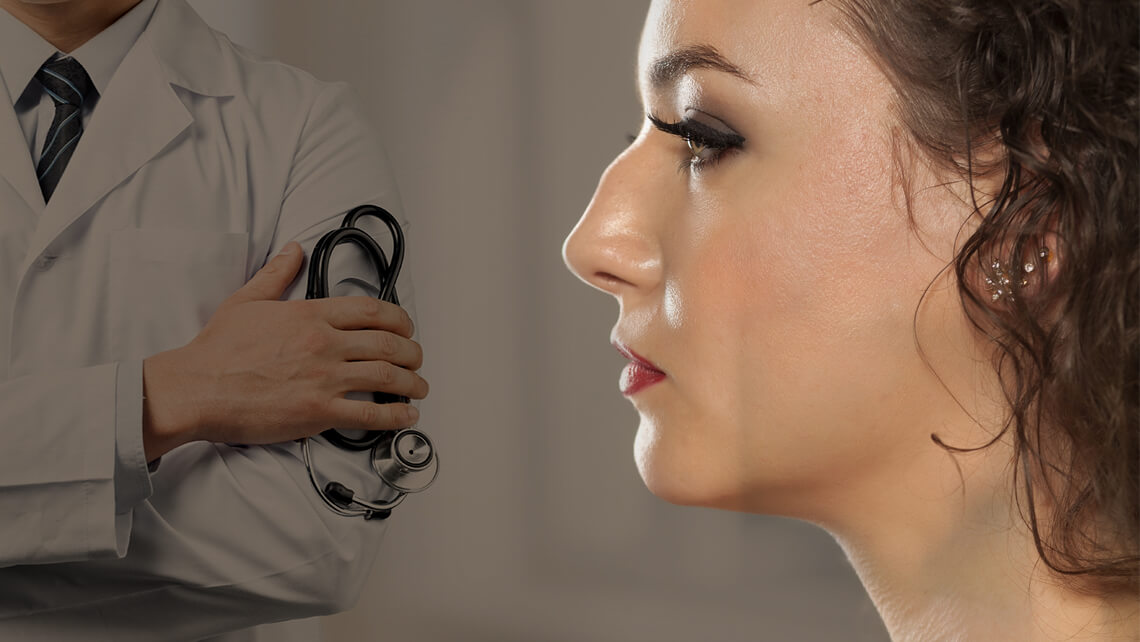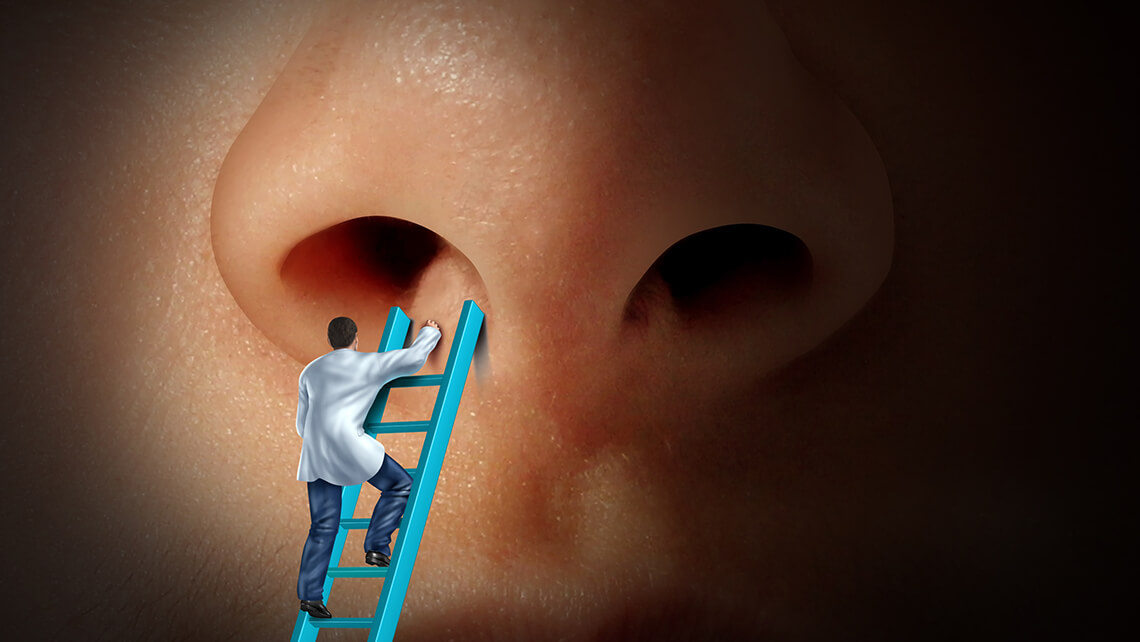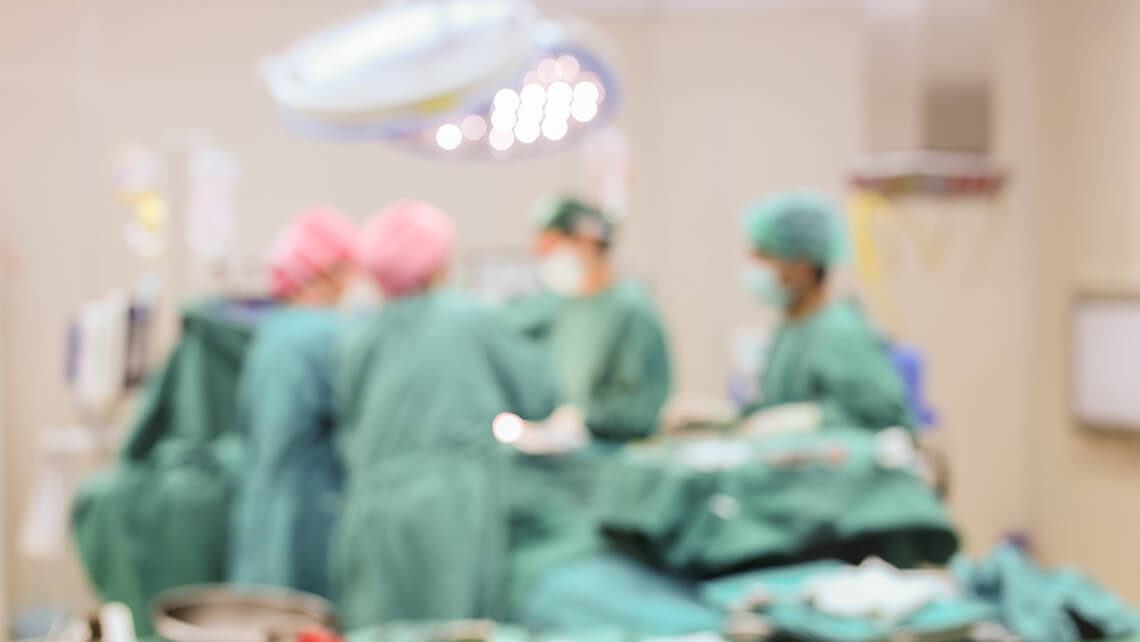Rhinoplasty is a surgical procedure intended for reshaping the nose to correct or improve its appearance. Reconstructive rhinoplasty is performed to correct congenital anomalies and post-traumatic deformities. It can also be performed in conjunction with septoplasty, which is a surgical procedure performed to relieve nasal congestion due to intranasal deformities.
- Telephone
-
(0532) 464 67 81
- serozt@gmail.com
Monday - Saturday (10.00 - 19.00 )
BURUN ESTETİĞİ
PROF. DR. SERDAR ÖZTÜRK
Revision means the process of revising for the purpose of correcting.
1. The preservation of the masculine appearance is the most important thing to consider in the aesthetic appearance of the male patient. The way of doing this differs depending on the face type and facial harmony of the patient. As a general rule, the nasal tip is not lifted or thinned too much (it is rarely done even in women, as it disrupts the naturalness). While the nasolabial angle is 105 degrees in women, it is kept around 90 degrees in men.
Why can't I breathe comfortably?
Rhinoplasty and Respiratory Problem (Septorinoplasty)
If you have a respiratory problem, it can be easily solved during rhinoplasty. In other words, septal deviation surgery or nasal concha surgery can be easily performed in conjunction with rhinoplasty, and in such a case, the surgical procedure is called Septorhinoplasty.
If a patient with a respiratory problem have rhinoplasty before solving this problem, the complaints will increase and the patient may need to undergo a series of surgical operations. Therefore, if patients with septal deviation or nasal concha problem consider rhinoplasty, they must request the combination of the two surgical procedures.
The nasal septum is a wall that divides the cavity into two parts. The anterior part consists of a solid but bendable cartilage, and the posterior part consists of bone. Under ideal conditions, the nasal septum should be on the midline, and the widths of the right and left nasal cavities should be equal to each other. In 80% of people, the nasal septum is not exactly located on the midline. However, this does not cause any complaints and usually does not constitute a health problem. Conditions where the septum deviates excessively from the midline are called nasal septum deviation or septal deviation.
Formation mechanisms of septal deviation differ from each other. Despite being rare, some babies are born with septal deviation due to the crooked development of the septum in the mother's womb. Sometimes, septal deviation occurs while the baby passes through the birth canal. In addition, impacts, falls, sports injuries and traffic accidents experienced in childhood and adulthood can cause septal deviation. Septal deviations may also occur as a result of the growth of the bone and cartilage parts of the nasal septum at different speeds in the physical development period.
Difficult nasal breathing is the most common symptom of septal deviation. Nasal congestion occurs usually on the side, towards which the septum is crooked. However, it can also cause breathing difficulties felt constantly on the both sides, and felt variably sometimes on the right and sometimes on the left.
Septal deviation is treated with a surgical procedure known as septoplasty. Septal deviation surgery can be performed separately or in combination with rhinoplasty.
Septoplasty can be performed under general or local anesthesia, depending on the condition. However, as a physician who thinks that septoplasty should be performed in combination with rhinoplasty, and who carries out his practices in line with this opinion, I’d like to state that performing this surgical procedure under local anesthesia is not practical and healthy. In the surgery, the nasal septum is brought to its correct position on the midline. During the surgery, the extremely curved parts of the septum are completely removed, while the correctable parts are reshaped and put back in their places. At the end of the surgery, nasal packings are placed in the both nasal cavities to keep the corrected septum in its place. These nasal packings are usually removed on the second postoperative day.
- After the surgery, you will have to breathe through your mouth as the inserted nasal packings will block your nose.
- The nasal packings will cause increased nasal secretion. A pink-colored watery nasal discharge will be observed as leakage from the edges of the nasal packings, and as post-nasal drainage. This discharge that will gradually decrease until the removal of the nasal packings is not hemorrhage.
- Be careful not to bump your nose and do not move it with your hand to check its condition.
- Use the drugs recommended by your physician regularly.
- If your doctor recommends a nasal spray, apply it regularly after the removal of the nasal packings.
- Avoid blowing your nose until your physician says you can. After the removal of the nasal packings, you can clean your nose with the spray by gently sniffing it.
- Never sniff tap water. You can take a short bath with warm water.
- After the surgery, dryness and scab formation may occur in the nose. To reduce these problems as far as possible after the removal of the nasal packings, breathe through the nose against the vapor of a bowl of boiled water every 2-3 hours in the first days and 3-4 times a day in the following days.
- Full recovery in the nose will take 2-6 weeks. During this period, visit your physician for dressings and controls at the times he/she recommended.
The nasal septum has centers which determine the development of facial bones. Surgical treatment of septal deviations detected in childhood is usually not performed before 17 years of age, with intent not to damage these centers and not to disrupt the facial bone development. In adults, these growth centers are not active, and for this reason, septoplasty operations do not have a negative effect on the facial shape.
If the septum is repositioned again within a few months after the septoplasty surgery before the completion of the recovery period, or if there is a deformity due to a new nasal trauma, a revision surgery may be required. However, the rate of those who had a revision surgery is not even 2%.
Natural rhinoplasty performed by preserving the unique characteristics of the nose, is more preferred today because it enables the nose to look naturally flawless. The most important cause of this is the need for looking natural and the fact that people are becoming more and more alike. To achieve this, the artistic proportions of the nose as well as the proportions between the nose and the face should be taken into consideration.
Does Nasal Tip Ptosis Develop After Rhinoplasty? This is one of the most frequently asked questions by our patients who apply for rhinoplasty.
Tip Rhinoplasty (Aesthetic Surgery of the Tip of the Nose): The nasal tip, which is the most attention-grabbing part of the nose, is aesthetically very important. It consists of the uppermost junctions of the cartilages in the form of the letter “n”, which forms the nasal wings. It has many different types, which have ethnic characteristics. Its height, width and angles are quite important.
Bleeding, one of the most important risks in rhinoplasty can sometimes be quite serious. The risk of unwanted bleeding is greater especially when rhinoplasty operations also involve non-aesthetic procedures performed through the nose to relieve nasal congestion (if necessary, it should definitely be performed). This risk is even higher in concha (nasal concha) resections. The nose is an organ that contains medium-sized blood vessels. However, bleeding in such places usually does not reach dangerous levels and can be stopped using simple tampons.
We can list the nasal deformities we often see in rhinoplasty under the following headings. These can exist in different combinations in a person. Rhinoplasty is a surgical procedure, which mostly involves reduction procedures and sometimes augmentation procedures in combinations.
Rhinoplasty is the most important surgical procedure among the aesthetic surgeries related to the facial area. The nose consisting of three-dimensional cartilage, bone and soft tissues is a special organ located in the center of the face, which directly affects facial expression, and also has a respiratory function. Since the nose is the organ last to complete its development in the facial region, rhinoplasty should be planned to be performed at 17 years of age at the earliest.
Rhinoplasty can be performed on men and women of all ages. However, rhinoplasty is not recommended before the completion of the physical development stage, in other words, before 16-17 years of age. If you think your nose is unproportional, if you have a nasal hump, if your nose looks very large when viewed from the front, if you have nasal septum deviation, or if your nostrils are too large and wide, you are a suitable candidate for this surgical procedure.
Although rhinoplasty is a surgical procedure intended to reshape the nose, it is can also be performed in conjunction with procedures intended to solve breathing problems. The purpose of rhinoplasty is to create a nose with a proper size, proper proportions with other elements on the face, and with good breathing function.
Tam donanımlı bir hastanede, genel anestezi altında yapılan operasyon yaklaşık 2- 3 saat kadar sürer. Uygun kişilerde tamamen burun içinden işlem yapılan kapalı teknik öncelikle tercih edilir. Ancak eğer gerekli görülürse burun delikleri arasındaki bölmenin ortasından yapılan küçük bir kesi ile açık teknik de uygulanabilir.
Importance of rhinoplasty: It is certain that the desire of human beings to change their external appearance goes back to ancient times. In addition to actions such as dressing, hair styling, shaving, and putting on make-up, people have begun to want surgical changes in their appearances, as a result of the development of surgical practices which have made surgical procedures safer.
Since you will be asleep, you will not feel the rhinoplasty surgery at all. The first thing you should pay attention to after the surgery is to avoid conditions that can increase intracranial pressure. In the past, the nasal packings used in surgeries and postoperative pain used to scare my patients the most. Such deterrents are a thing of the past. You will not have postoperative pain after rhinoplasty, and nasal packings will not be too uncomfortable. Sometimes, even nasal packings are not used in suitable patients.
Read more: Facts You Need to Know About the Postoperative Period of Rhinoplasty
Rhinoplasty prices determined based on the same criteria almost all over the world, vary from case to case. The most important one of these criteria is the of the surgeon’s confidence in himself/herself and the results of the operation.
Estetik Cerrahi
To inform!!!
All information, comments and images on this site are for informational purposes only and are not intended to guide diagnosis and treatment.
Recommended Articles
Office Address
Muhsin Yazıcıoğlu Caddesi Akgül Apt. No:1/11 (MADO Üstü)
Çukurambar / ANKARA
Monday - Saturday: 10.00 - 19.00



